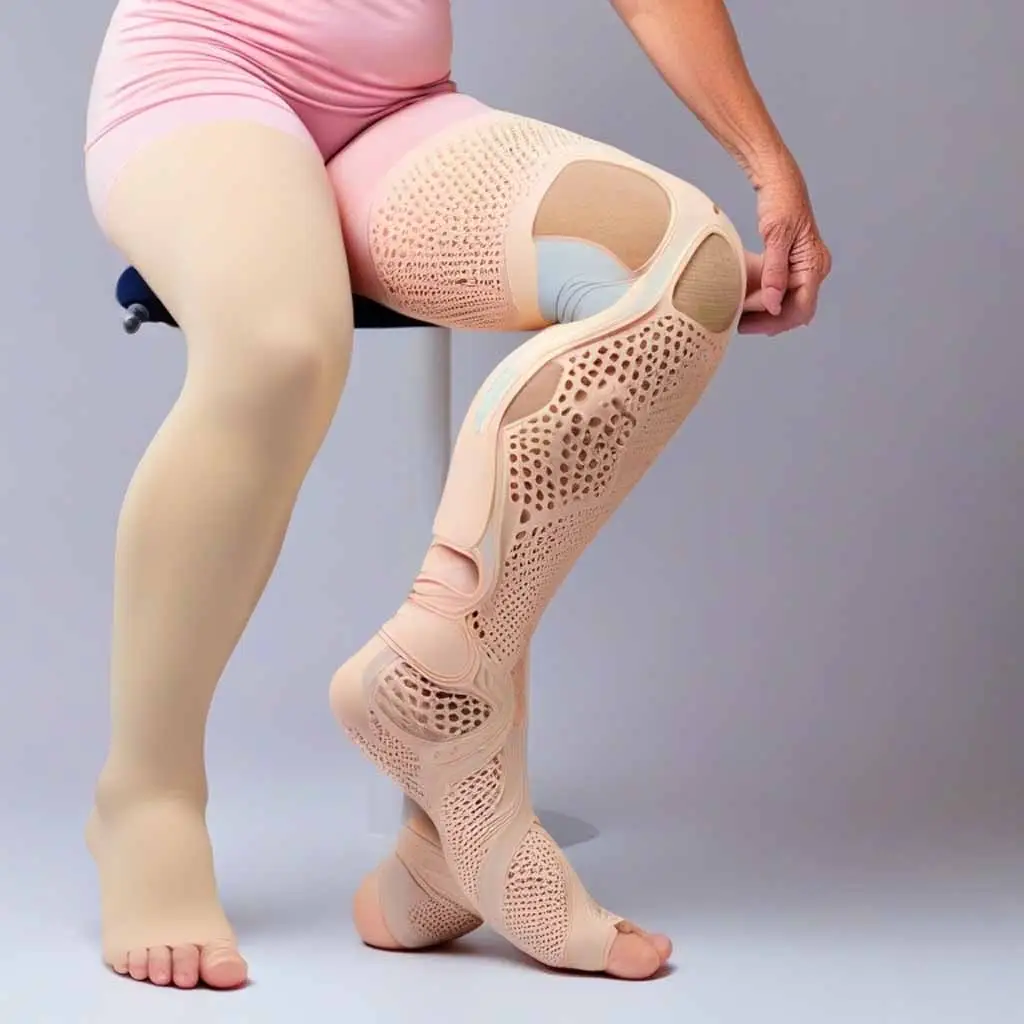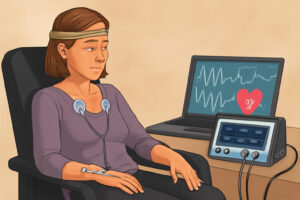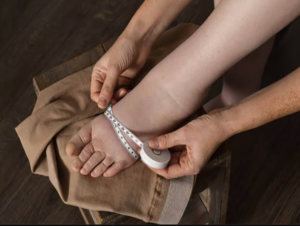Understanding Secondary Lymphedema: Pathophysiology and Effective Treatment
Secondary lymphedema is a condition that arises when the lymphatic system is compromised due to certain factors, often after surgical interventions or cancer treatments. This article delves into the causes, symptoms, pathophysiology, and effective treatments of secondary lymphedema, aiming to provide valuable insights for both patients and healthcare professionals. Understanding this condition is crucial for managing its impact on daily life and improving the quality of life for those affected.
What are the Causes of Secondary Lymphedema?
Common Causes of Secondary Lymphedema
Secondary lymphedema can develop from various causes, with one of the most common being the surgical removal of lymph nodes during cancer treatment. For instance, patients undergoing surgery for breast cancer often experience breast cancer-related lymphedema due to the removal of axillary lymph nodes. Other common causes include radiation therapy, infections, and trauma, which can all lead to lymphatic obstruction and the subsequent development of lymphedema. Furthermore, conditions such as obesity and immobility can exacerbate the risk of developing lymphedema, as they hinder the natural flow of lymph fluid within the lymphatic system, leading to fluid accumulation and swelling in the limbs.
How Does Cancer Treatment Lead to Lymphedema?
Cancer treatments, particularly surgical procedures and radiation, significantly increase the risk of developing lymphedema. During surgery, lymph nodes may be excised to prevent the spread of cancer, disrupting the normal drainage of lymph fluid. This disruption can lead to an overload of lymph fluid in the surrounding tissue, resulting in limb lymphedema. Radiation therapy can further damage the lymphatic vessels, causing fibrosis and scarring, which hampers the ability of the lymphatic system to function effectively. Consequently, cancer patients, especially those treated for breast cancer, should be closely monitored for signs of lymphedema following their treatment regimen.
Understanding Acquired Lymphedema
Acquired lymphedema, a subtype of secondary lymphedema, occurs due to external factors that compromise the lymphatic system’s functionality. Unlike primary lymphedema, which is often genetic, acquired lymphedema is typically a result of surgery, trauma, or infections. Understanding the pathogenesis of lymphedema is crucial, as it allows healthcare providers to recognize the early signs and implement appropriate measures for prevention and management. Patients who have undergone cancer treatments are at a heightened risk, and education about the potential for developing lymphedema is vital for early detection and intervention.
What are the Symptoms of Lymphedema?
Early Signs of Limb Lymphedema
Recognizing the early symptoms of lymphedema is essential for effective management and treatment. Initial signs often include a feeling of heaviness or tightness in the affected limb, which may gradually develop into noticeable swelling. Patients may observe that their clothing or jewellery fits more snugly than usual. Early detection of these symptoms is critical, as timely intervention can significantly reduce the severity of limb lymphedema and improve long-term outcomes for lymphedema patients.
How to Recognize Symptoms in Lymphedema Patients
In lymphedema patients, recognizing symptoms can be challenging, as they often develop gradually. Common symptoms of lymphedema include persistent swelling, changes in skin texture, and restricted mobility of the affected limb. Additionally, patients may experience discomfort or pain, which can affect their daily activities. Healthcare professionals must educate patients on the importance of monitoring their limbs for any signs of swelling or changes, as early symptom recognition can facilitate prompt treatment and improve quality of life.
Impact of Lymphedema Symptoms on Daily Life
The symptoms of lymphedema can significantly impact a patient’s daily life, leading to both physical and emotional challenges. The swelling associated with limb lymphedema can hinder mobility, making simple activities such as walking or exercising difficult. Furthermore, the visible changes in appearance can lead to self-consciousness and emotional distress. Lymphedema is a chronic condition that requires ongoing management, which can add to the psychological burden. Patients may benefit from support groups and counselling as part of their comprehensive lymphedema management plan.
How Does the Lymphatic System Function in Lymphedema?
The Role of Lymph Nodes in Lymphedema
The lymphatic system plays a crucial role in maintaining fluid balance within the body by transporting lymph fluid, which contains waste products and immune cells, back into the bloodstream. Lymph nodes act as filters, removing harmful substances and pathogens from the lymph fluid. In the case of secondary lymphedema, the removal or damage to lymph nodes disrupts this delicate balance, leading to fluid accumulation in the tissues and subsequent swelling. Understanding the role of lymph nodes in lymphedema is essential for grasping the complexities of this condition and the importance of monitoring lymphatic health in at-risk patients.
Pathophysiology of the Lymphatic System in Secondary Lymphedema
The pathophysiology of secondary lymphedema involves a multifaceted interplay between lymphatic vessel obstruction, increased lymphatic pressure, and tissue inflammation. When lymph nodes are removed or damaged, the normal transport capacity of the lymphatic system is compromised, leading to a backlog of lymph fluid. This can cause lymphatic vessels to become dilated and further damage the surrounding tissues, contributing to the condition’s progression. A deeper understanding of the pathophysiology of lymphedema is vital for developing targeted treatments and interventions that can alleviate symptoms and restore lymphatic function.
Understanding Fibrosis and Remodeling in Lymphedema
Fibrosis is a key feature of lymphedema, where excess collagen deposition occurs in the tissues, leading to stiffness and reduced elasticity. This process can significantly impair the function of the lymphatic system and exacerbate the symptoms of lymphedema. Remodeling of the lymphatic tissues can also occur as the body attempts to adapt to the altered lymphatic flow. Recognizing the processes of fibrosis and remodelling in lymphedema is crucial for implementing effective treatment strategies that address both the symptoms and underlying physiological changes.
What are Effective Treatments for Secondary Lymphedema?
Overview of Lymphedema Management Techniques
The treatment of secondary lymphedema focuses on managing symptoms and improving the patient’s quality of life. Effective lymphedema management techniques may include compression therapy, which helps reduce swelling by applying pressure to the affected limb. Manual lymphatic drainage (MLD) is another therapeutic approach that involves gentle massage techniques to stimulate lymph flow and alleviate fluid accumulation. Additionally, exercise and physical therapy can enhance lymphatic circulation and improve mobility. Educating patients about self-care strategies is also essential to empower them to manage their condition effectively.
Innovative Treatments for Limb Lymphedema
Recent advances in the treatment of lymphedema have led to the exploration of innovative therapies. Techniques such as low-level laser therapy and pneumatic compression devices have shown promise in enhancing lymphatic function and reducing swelling. Additionally, surgical options, including lymphatic bypass procedures and liposuction, may be considered in severe cases of lymphedema. Ongoing research, including studies using a mouse model of lymphedema, aims to uncover new treatment modalities and improve outcomes for patients suffering from this chronic condition.
Self-Care Strategies for Living with Lymphedema
Self-care plays a vital role in the treatment of lymphedema. Patients are encouraged to integrate certain lifestyle modifications, including maintaining a healthy weight, engaging in regular physical activity, and practising good skin care to prevent infections. Elevating the affected limb can also help reduce swelling, while compression garments can provide ongoing support and promote lymphatic drainage. Education about recognizing symptoms early and adhering to treatment plans is critical for lymphedema patients to manage their condition effectively and enhance their quality of life.
What is the Impact of Lymphedema on Patients?
Physical and Emotional Effects of Living with Lymphedema
The impact of lymphedema on patients extends beyond physical symptoms; it also encompasses emotional and psychological challenges. Physically, the swelling can limit mobility and make everyday activities more cumbersome. Emotionally, patients may experience feelings of frustration, anxiety, or depression as they cope with their condition. The visible effects of lymphedema, such as changes in limb size, can result in body image issues and social withdrawal. Recognizing these multifaceted effects is crucial for healthcare providers to offer comprehensive support to lymphedema patients.
Strategies to Cope with the Impact of Lymphedema
To cope with the impact of lymphedema, patients can employ various strategies. Engaging in support groups can provide a sense of community and shared experience, helping individuals realize they are not alone in their struggles. Additionally, practising mindfulness and stress-reduction techniques can aid in managing emotional distress. Access to counselling or therapy can also benefit those grappling with the psychological effects of living with lymphedema. By fostering resilience and developing coping mechanisms, patients can navigate the challenges posed by this chronic condition more effectively.
Long-Term Considerations for Lymphedema Patients
Long-term considerations for lymphedema patients include ongoing monitoring and management of symptoms to prevent complications such as infections or severe swelling. Regular check-ups with healthcare providers are essential to assess lymphatic health and adjust treatment plans as needed. Furthermore, patients should be educated about the potential for developing lymphedema following cancer treatment and encouraged to remain vigilant for any changes in their limbs. Ultimately, a proactive approach involving self-care, education, and support can significantly enhance the long-term well-being of individuals living with lymphedema.
FAQS
Q: What are the common causes of lymphedema?
A: The causes of lymphedema include damage to the lymphatic system from surgery, radiation, infection, or trauma. It can also arise from conditions like cancer, particularly in breast cancer survivors who may develop secondary lymphedema after treatment.
Q: How does fibrosis in lymphedema affect patients?
A: Fibrosis in lymphedema can lead to thickening and scarring of the tissue, which may increase the severity of lymphedema. This condition can cause discomfort and restrict mobility in patients with lymphedema.
Q: What is the difference between primary and secondary lymphedema?
A: Primary lymphedema is a genetic condition present at birth or develops during puberty, while secondary lymphedema occurs due to damage to the lymphatic system from factors like surgery, cancer treatments, or infections.
Q: What role does cancer treatment play in the development of secondary lymphedema?
A: Cancer treatments such as surgery and radiation can damage lymphatic vessels, increasing the risk of lymphedema in patients with lymphedema, especially for those undergoing treatment for breast cancer.
Q: Can lymphedema occur in both the upper and lower extremities?
A: Yes, lymphedema can affect any part of the body, including the upper extremity lymphedema and lower extremity lymphedema, depending on where the lymphatic system is compromised.
Q: What is the mechanism of lymphedema development?
A: The mechanism of lymphedema development involves a disruption in the normal lymphatic flow, leading to fluid accumulation in tissues. In secondary lymphedema, this disruption often results from surgical intervention or radiation therapy.
Q: Are there specific treatments for upper extremity lymphedema?
A: Yes, treatment for upper extremity lymphedema may include physical therapy, compression garments, manual lymphatic drainage, and in some cases, surgical treatment of lymphedema to improve lymphatic function.
Q: How can patients manage the risk of lymphedema after cancer?
A: Patients can manage the risk of lymphedema by following their healthcare provider’s recommendations, practising good skin care, engaging in gentle exercises, and using compression garments when necessary.
Q: Is there ongoing research related to experimental lymphedema?
A: Yes, there is ongoing research into experimental lymphedema, including studies on the underlying mechanisms and potential new treatments that could improve the outcomes for patients with lymphedema.





